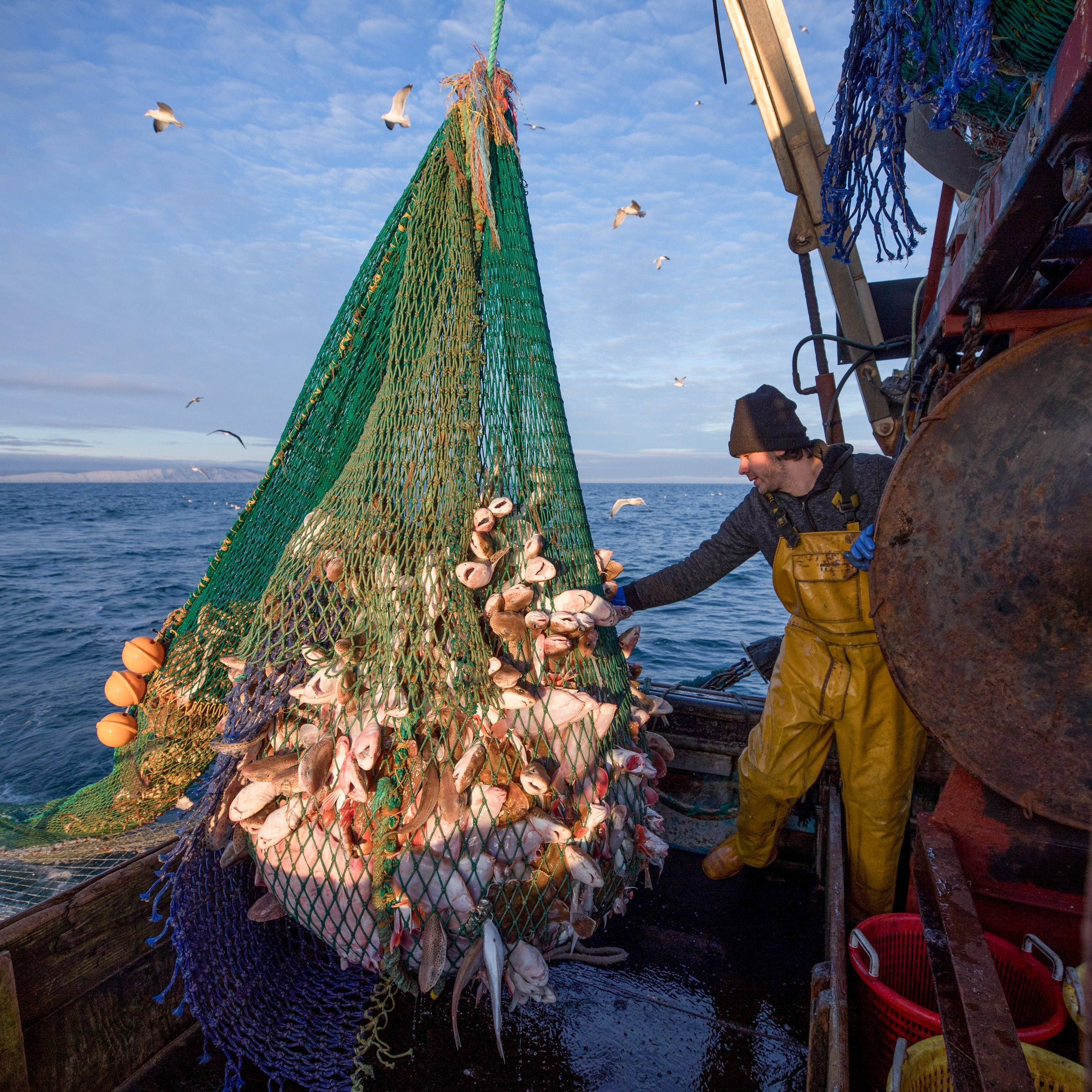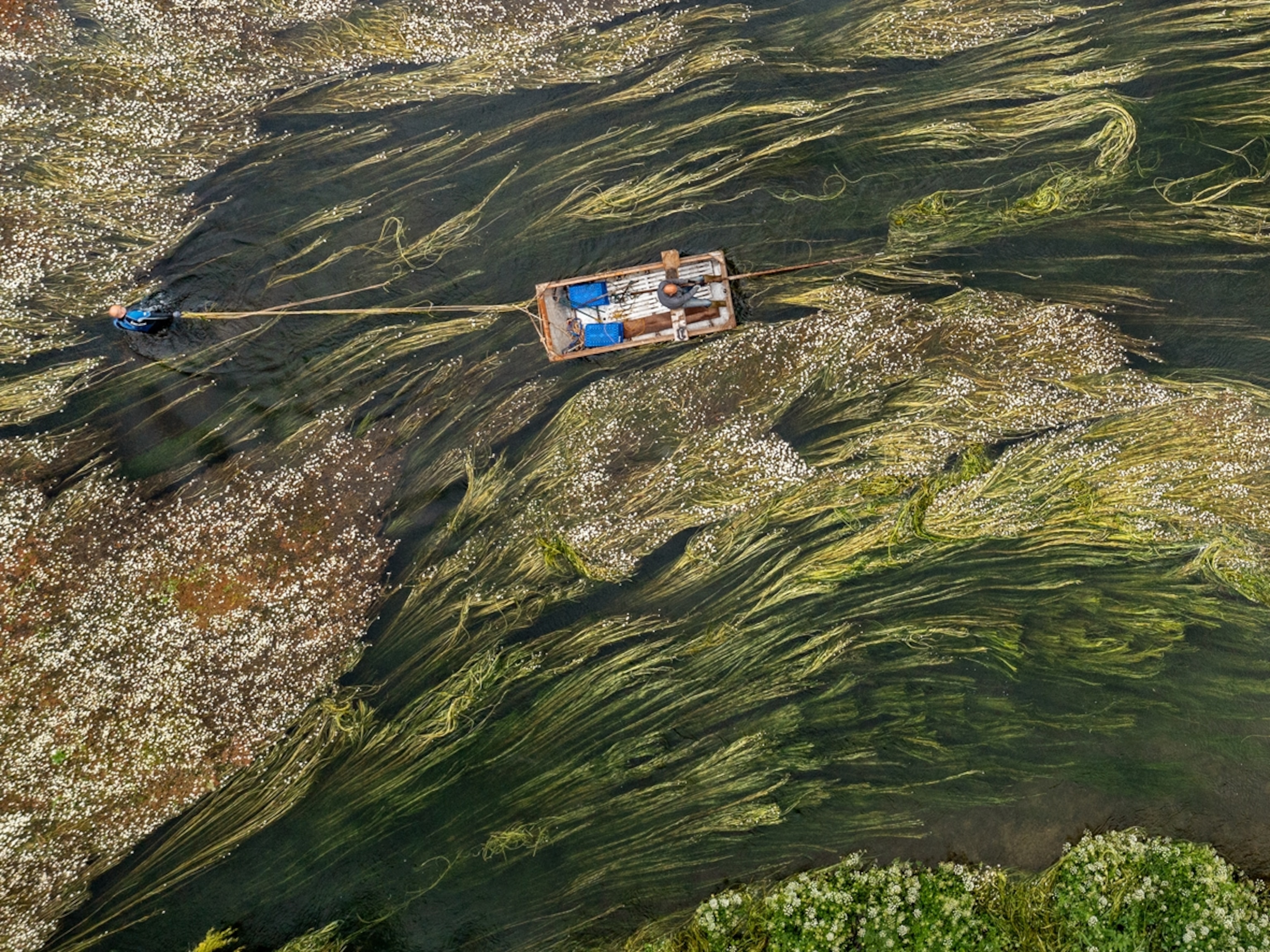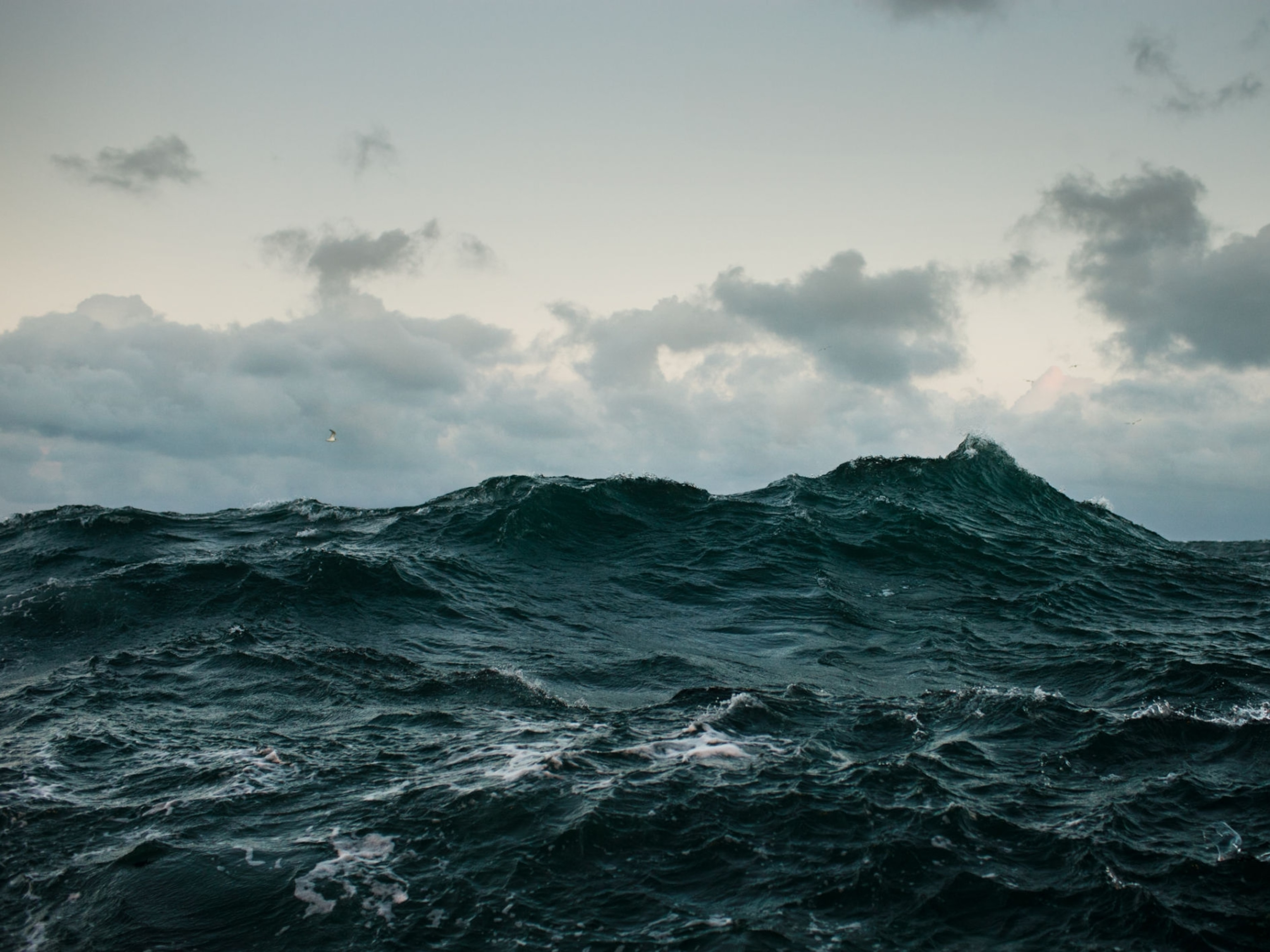Hunting for 11-Ton Fishing Net in the War Against Ocean Trash
A massive piece of derelict fishing gear underscores the effort, expense, and dangers posed by an ever-increasing amount of marine debris.
They dubbed it the “monster net.”
The abandoned fishing net weighed an estimated 11.5 tons and had become a legend among the experts working in Hawaii’s Papahanaumokuakea Marine National Monument, a World Heritage site and one of the largest marine conservation areas in the world.
A year passed between the first sighting of this monster by experts with the National Oceanic and Atmospheric Administration (NOAA) and other agencies, and when they finally located again and hauled it up. In that time, the net had broken free of a GPS tracking device, killed or injured multiple large marine animals and devastated giant swaths of coral. (See 13 pictures that capture the wonder of oceans.)
“From the surface the net looked like a little island of floats, but once in the water it turned into a dark wall of destruction,” says Mark Manuel, chief scientist of NOAA’s Coral Reef Ecosystem Division’s Marine Debris Project. “The entire habitat around the net was leveled like a parking lot.”
The story of this one abandoned net—collected as part of a $1.2 million debris recovery operation last October—is just one example of the effort, cost, and even personal risk involved in the war against the rapid rise of ocean trash.
According to three recent studies, the oceans hold 5.25 trillion pieces of plastic; some 269,000 pieces float on the surface, while some four billion plastic microfibers per square kilometer are suspended below. (Read more about what scientists are calling the “wow factor” of ocean trash.)
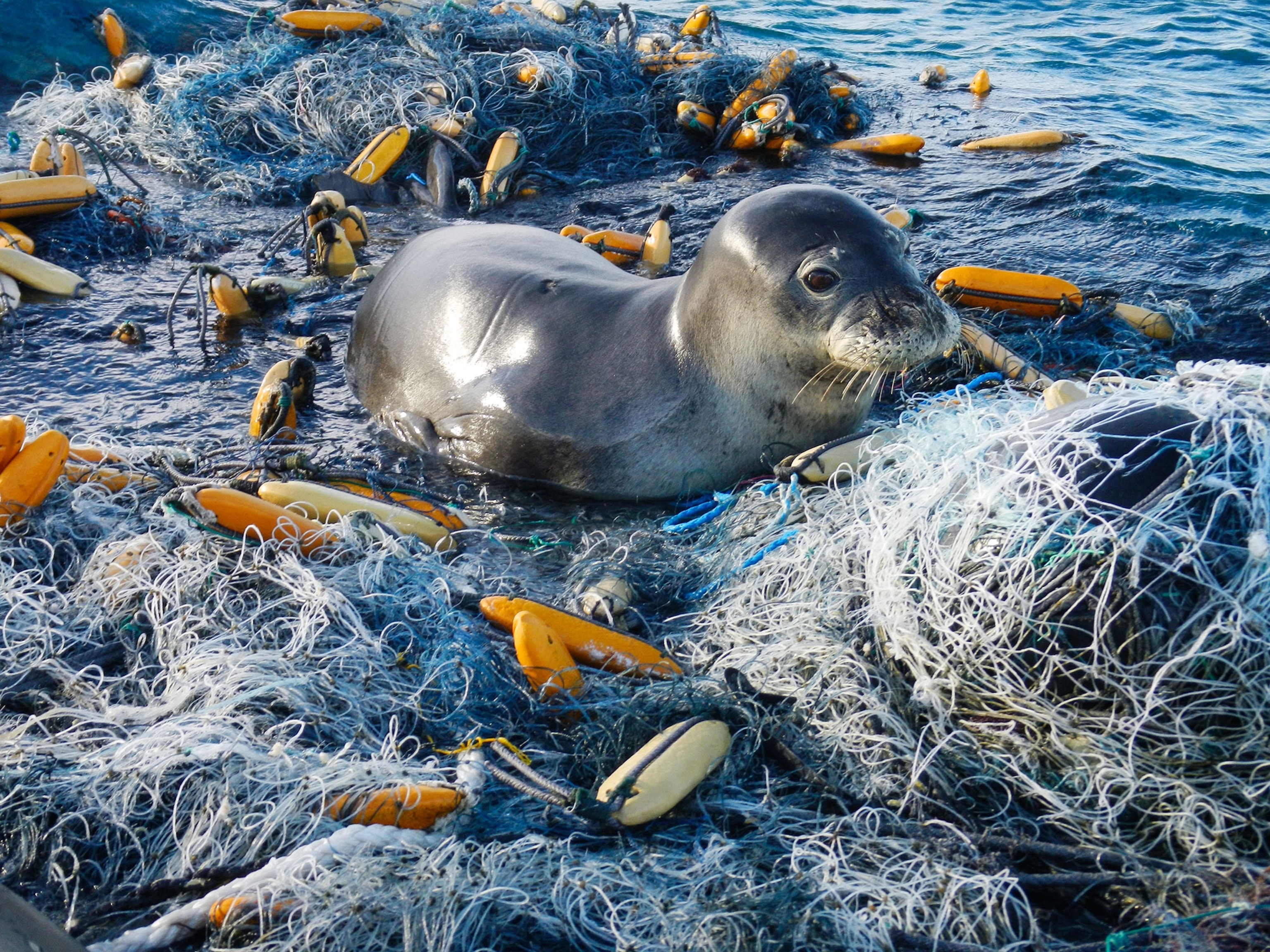
The oceans also are littered with derelict fishing gear (DFG)—nets, lines, traps, and other lost or abandoned fishing equipment. Synthetic net and line materials like nylon and polypropylene can present hazards to navigation, lead to the introduction of invasive species, and result in the unintentional trapping of animals. Large mammals, such as whales and seals, as well as birds and other marine life often become entangled in lost or discarded gear, a phenomenon known as “ghost fishing.”
Efforts to remove and recycle this trash include the Fishing for Energy Program and Hawaii’s Nets to Energy Program, which works with local steel and energy partners to incinerate and recycle marine trash instead of adding it to Hawaii’s already brimming landfills.
“100 tons of derelict fishing gear creates enough electricity to power 43 homes in Hawaii for one year,” says Grace Chon of NOAA’s Marine Debris Program. But a large-scale solution, she says, requires preventing the equipment from becoming lost in the oceans in the first place.
Rise of Ghost Fishing
The Northwestern Hawaiian Islands stretch for 1,200 miles northwest of the eight main Hawaiian Islands and shelter more than 7,000 marine species, including 14 million seabirds, rare and threatened land birds, and green sea turtles, according to NOAA. One quarter of these species, including the endangered Hawaiian monk seal, are only found in the Hawaiian Archipelago. The islands’ reefs account for some 70 percent of all tropical, shallow-water coral reef habitat in the U.S.
NOAA scuba divers first spotted the enormous abandoned net in 2013 on an outer reef of the island system’s Pearl and Hermes Atoll. Parts of it were snagged on the sea floor. A giant tree twisted in its mass, and a green sea turtle, a threatened species under the Endangered Species Act, was injured and snared in its folds.
The net was a clear hazard to wildlife. But the net was too big for those who found it to move.
By the time monk seal researchers spotted the net some ten days later, it had entangled and killed three reef sharks. The researchers also lacked the resources to remove it, but they tagged it with a GPS tracker so it might be found again if it detached from the shallow reef. A few weeks later, when a north swell arrived, the tag stopped transmitting.
A year later, in late September 2014, NOAA’s marine debris staff, including 17 divers, set off on a 33-day ocean debris clean-up mission. The Monster Net wasn’t the primary objective of the trip, but it was a quarry the debris team desperately hoped to find.
The Pearl and Hermes Atoll and other islands with their shallow reefs act “like a fine-tooth comb” to sieve out and collect debris like nets and even fishing vessels from the giant gyres of trash in the Pacific, says the debris mission’s chief scientist Manuel. The monster net (or “net monster” as some also called it), could have come from anywhere. The Great Pacific Garbage Patch was east and north of the area they’d be surveying, and winter storms in the higher latitudes of the North Pacific generate massive swells that, with little in their path to check them, hit Hawaii’s northern-facing reefs hard.
Kyle Koyanagi, regional coordinator for the Marine Debris Program in the Pacific Islands and co-lead on the mission, also knew that the longer the net stayed in the water, the more likely it would take on what he describes as the ‘Tumbleweed Effect’.
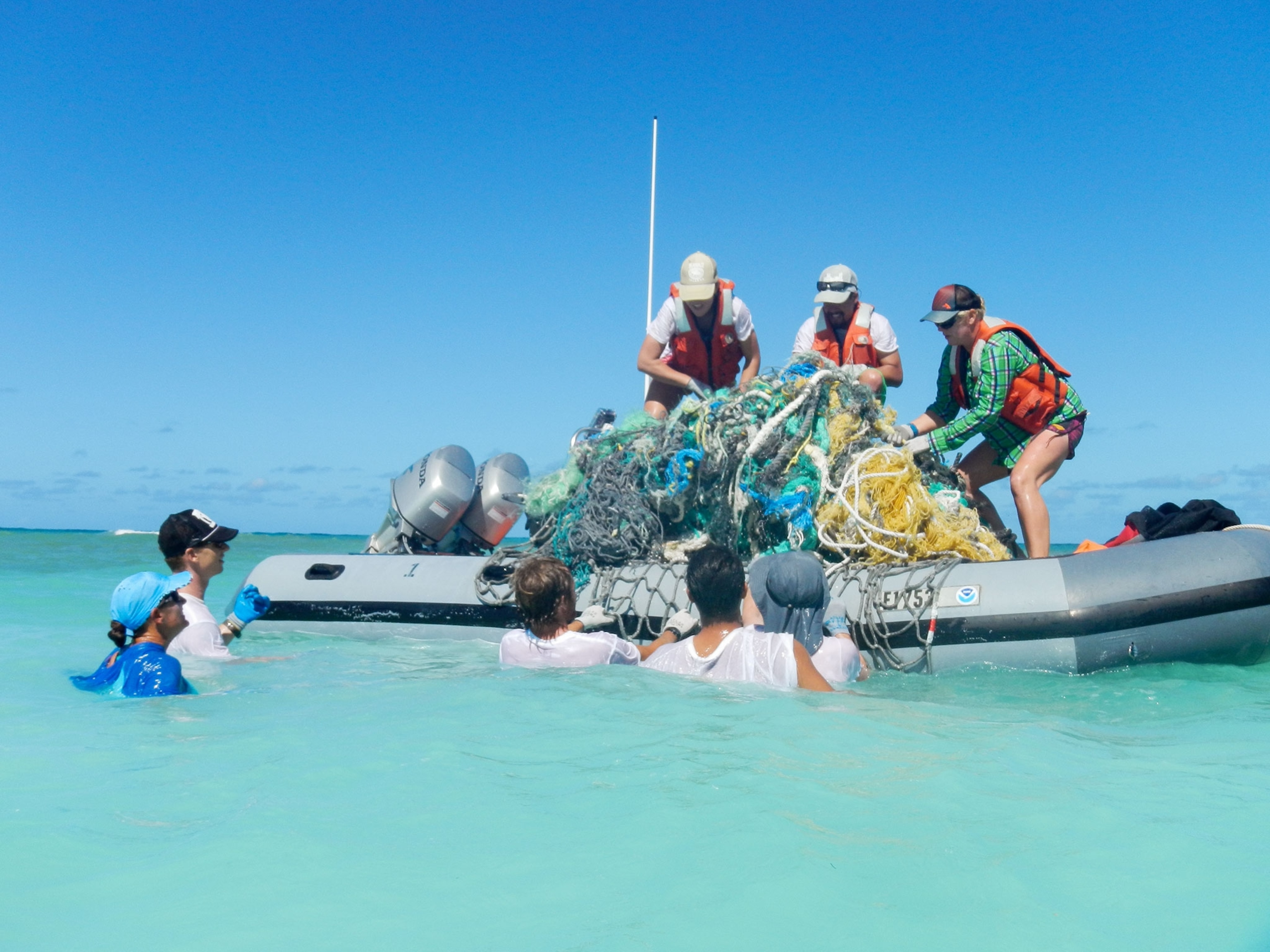
“That’s when nets or debris start to pick up coral heads and other materials as they tumble along, until they get heavy and begin to sink.” In order to find them, skilled divers and scientists must swim or tow board along the shallow reefs and search for them underwater.
Hunting in the Shallows
On the fourth day of their clean-up operation, one of their four inflatable, 17-foot boats moved out to carefully hunt for the net in the back reef area near the outer edge of an atoll’s lagoon where the scientists, who had created potential GPS waypoints for the net using satellite imagery and other data, suspected it might have traveled. They found an 80-foot length of docking line, and, disappointed, moved on.
Several miles later, motoring slowly through the intricate, maze-like reefs and deeper pools of the lagoon they noticed something in the distance. As they got closer, they saw about a dozen masked boobies resting suspiciously on the water’s surface. The seabirds were perched on a large object.
Drawing closer, they could be certain: it was the Monster Net. But it was even more formidable than previously thought.
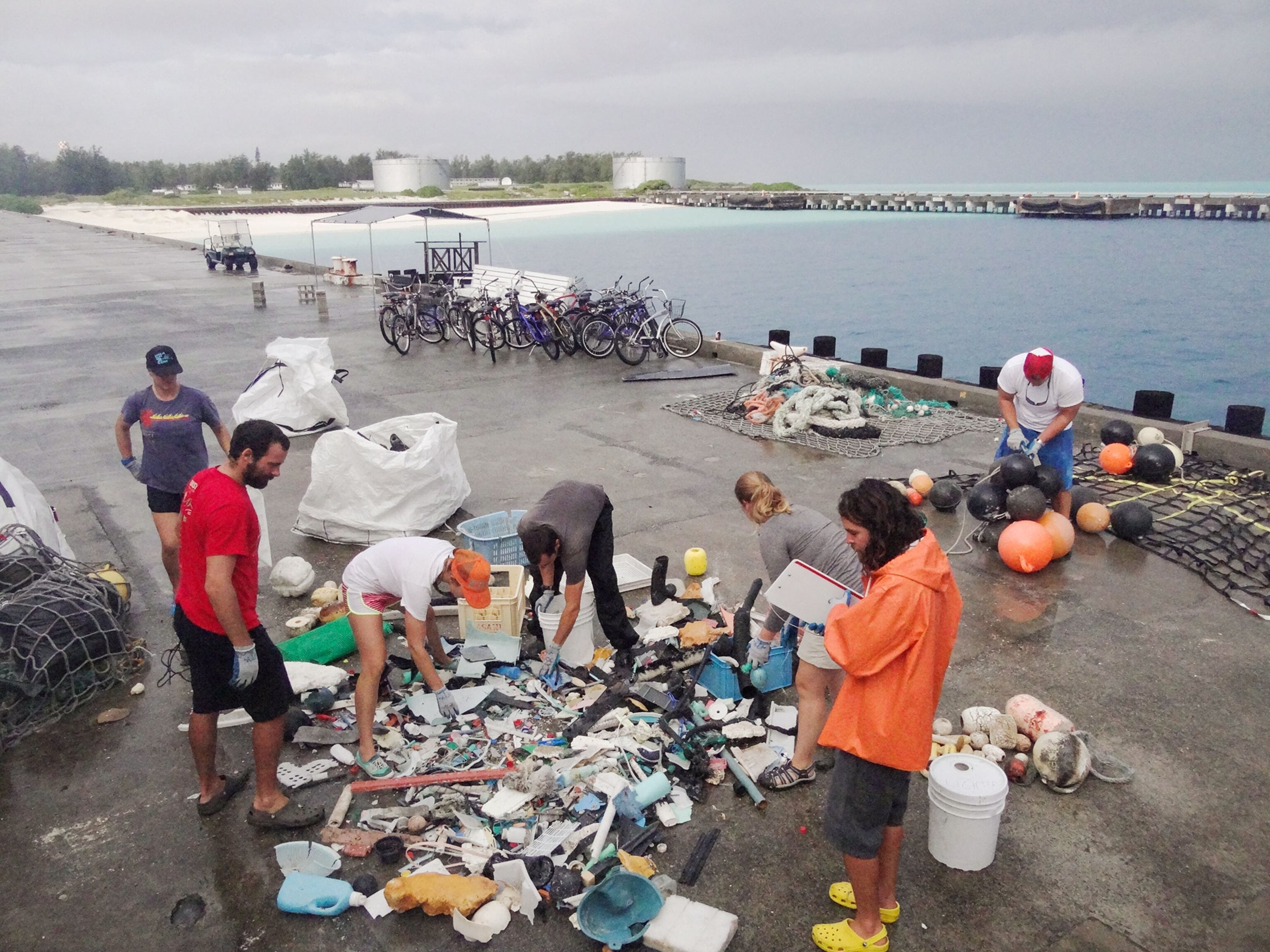
A tightly bound mass of nylon multifilament gillnet, about 30 feet long by 8 feet wide, was visible about a foot above the surface. Underneath were more tons of netting extending 16 feet deep. It was the biggest piece of DFG anyone on the team had ever seen, and it would take four days of grueling, underwater effort by teams of divers, with and without scuba gear, to cut the net down to towable size.
“You’re looking at something that is meant to entangle and kill,” says mission co-lead Koyanagi. “Scuba gear can easily get tangled so both types of divers work together meticulously to protect the reef as they remove nets, and not get trapped themselves.”
It took three days to tow the net away, at a slow speed in order to protect the vulnerable reef.
The mission had a good haul. In addition to 465 smaller nets, their final tally was 57 tons of derelict fishing gear and trash. Their total added up to more than 21,000 items including 7,436 hard plastic fragments, 3,758 bottle caps, 1,469 plastic beverage bottles and 477 lighters and the removal of two 30-foot derelict vessels suspected to have originated from the 2011 Japanese tsunami, and of course, the 11.5 ton monster net.
“When we finally cut through the last section of the net there was a tremendous sense of accomplishment,” says Manuel. “A loud cheer could be heard through everyone's snorkels.”
An injury assessment of the net’s damage to the reef is currently underway, he says, to get an estimate of the potential damage to the coral between its first and second sighting, more than a three mile distance. “It’s very hard to determine the damage because it probably didn’t follow a straight path. But the coral found directly under it was smothered, it was just like a rubble patch.”
Their next clean up mission is set for this summer, focused around the Midway Atoll. “We are just scratching the surface,” says Manuel. “Our effort is a band aid, we need to stop the debris at its source.”
Follow Eve Conant on Twitter.


